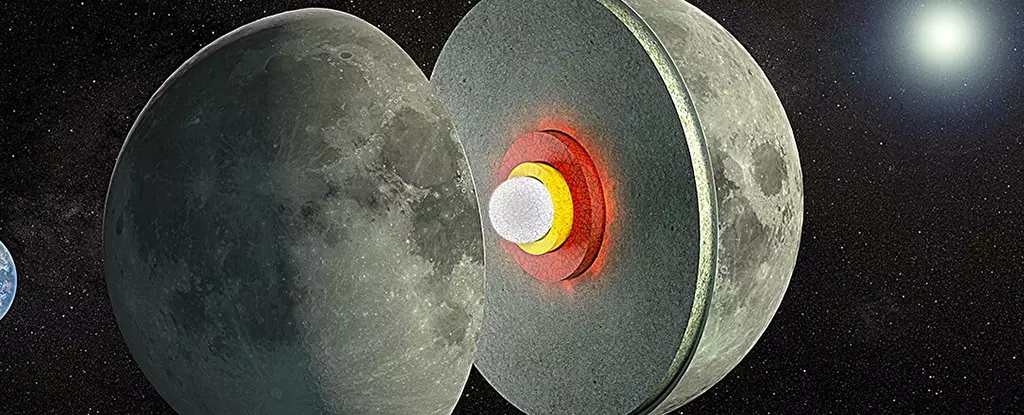The Moon has long been a subject of intrigue and fascination, not just for astronomers but also for geologists keen on understanding its complex geological makeup. Recent research emerging from teams at NASA’s Goddard Space Flight Center and the University of Arizona challenges the traditional perception of the Moon’s interior structure. Their findings suggest the existence of a partially-molten layer nestled between the Moon’s rocky mantle and its metallic core, a theory that could reshape our understanding of lunar geology.
The investigation into the Moon’s interior gained momentum with advancements in data collection techniques, particularly through NASA’s Gravity Recovery and Interior Laboratory (GRAIL) and Lunar Reconnaissance Orbiter missions. These sophisticated tools have enabled researchers to capture previously unseen aspects of the Moon’s gravitational behavior and rigidity under the influence of both Earth and the Sun. By analyzing this data, the research team uncovered indications that the lunar mantle might not be solid throughout, revealing a complex structure characterized by a low-viscosity zone (LVZ) at its base.
The concept of tidal forces is often associated with oceanic movements on Earth, but these gravitational influences also apply to the Moon. Due to the gravitational pull from both the Earth and the Sun, the Moon experiences subtle deformations in its shape and gravitational field. For many years, scientific inquiry has hinted at the possibility of these deformations indicating a less rigid interior. This recent analysis represents a significant step forward, allowing for annual estimates of lunar tidal changes—an achievement that brings us closer to understanding the Moon’s dynamic interior.
Analytical models indicate that the LVZ within the lunar mantle is necessary to account for the physical changes observed. One of the most captivating angles of this research is the hypothesis surrounding the mineral ilmenite, which could contribute to this low-viscosity environment at the base of the mantle. Researchers have drawn parallels between the Moon and Mars, where similar geological anomalies identified through seismic studies suggest a partial melt. Should the Moon share this characteristic, it prompts deeper inquiries into its thermal history and volcanic activity over geological timescales.
The implications of finding a partially-molten zone are profound. By confirming its existence, scientists can glean insights into the Moon’s thermal state and evolutionary journey. As we venture towards establishing permanent bases on the lunar surface in the near future, real-time seismic readings could facilitate further research and validation of these hypotheses. This ongoing exploration will not only refine our understanding of the Moon but could also yield vital information about planetary formation processes in a broader context.
The journey to unravel the secrets hidden deep within the Moon is an ongoing one, filled with challenges and discoveries. As researchers refine their models and the technology for lunar exploration continues to advance, our comprehension of the Moon’s interior structure will likely evolve. The presence of a low-viscosity zone offers promising avenues for future studies, potentially revealing how our natural satellite has changed over billions of years. Such findings remind us that in the realm of planetary science, each layer of knowledge builds upon the last, illuminating the intricate and dynamic nature of celestial bodies within our solar system.

